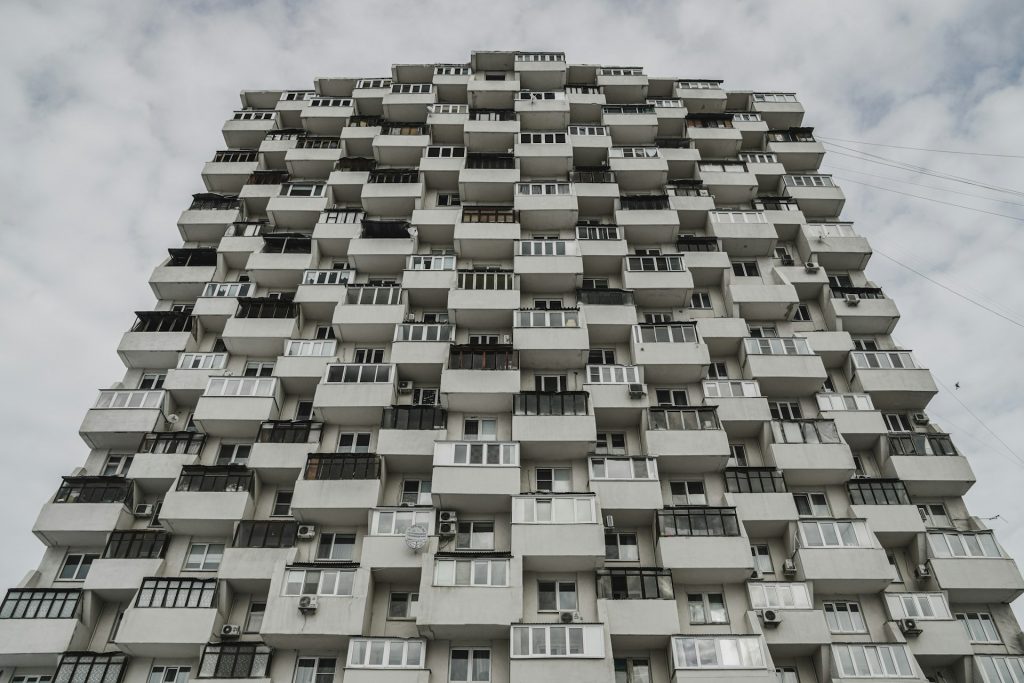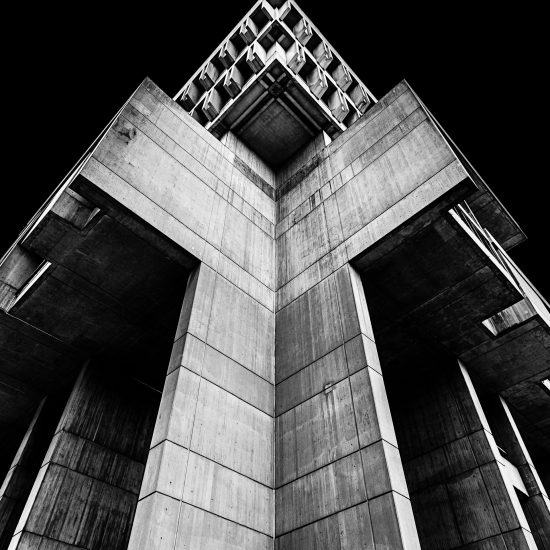Brutalist architecture, with its raw, unadorned concrete surfaces and imposing geometric forms, has long been a subject of intense debate. Emerging in the mid-20th century, this architectural style is both celebrated for its boldness and criticized for its austere aesthetics. This article delves into the history, key characteristics, global impact, and notable examples of Brutalist architecture, exploring why it continues to evoke strong reactions and leave a lasting legacy in the architectural world.
The Origins and Evolution of Brutalism
Post-War Roots
Brutalism emerged in the 1950s as a response to the widespread devastation of World War II. The need for affordable, functional buildings led architects to embrace raw concrete, known as “béton brut,” a term coined by the Swiss-French architect Le Corbusier. Reyner Banham, an architectural critic, popularized the term “Brutalism” in 1953 to describe this new, unrefined architectural style that emphasized the honesty of materials and structure (The Constructor) (Unraveling Archi).
Modernist Influences
Brutalism drew heavily from the modernist movement, rejecting ornamental design in favor of functionalism. Architects like Le Corbusier and Ludwig Mies van der Rohe influenced the movement, promoting principles that prioritized utility and structural clarity. This approach was seen as a departure from the more decorative styles of the past, aiming instead for a straightforward, almost primitive aesthetic that showcased the rawness of concrete (Designhub1610).
Key Characteristics of Brutalist Architecture

Source: https://unsplash.com/photos/a-very-tall-building-with-balconies-and-windows-SKwSf7-HBMw
Raw Concrete and Bold Geometries
One of the defining features of Brutalist architecture is its use of exposed concrete, often left unfinished to highlight its natural texture and strength. This material choice conveys a sense of permanence and monumentality. Brutalist buildings are characterized by their massive, blocky forms and repetitive geometric patterns, creating a visually striking and often imposing presence (The Constructor) (Unraveling Archi).
Functionality and Form
Brutalist architecture places a strong emphasis on functionality. The design of these buildings often reveals their structural elements, celebrating the construction process itself. This transparency in design aligns with the modernist belief that form should follow function, leading to buildings that are both practical and aesthetically honest. The lack of ornamentation further underscores this focus on utility (Designhub1610) (The Art Story).
Global Impact of Brutalism
Iconic examples of Brutalist Architecture around the World
Brutalism’s influence quickly spread beyond Europe, leaving its mark on various architectural landscapes globally. Iconic examples include:
- The Barbican Centre, London, UK: Designed by Chamberlin, Powell, and Bon, this complex integrates residential, cultural, and recreational spaces, exemplifying Brutalism’s adaptability (Designhub1610).
- Boston City Hall, USA: Known for its distinctive inverted pyramid shape, this building by Kallmann, McKinnell & Knowles is a quintessential example of American Brutalism (The Art Story).
- Trellick Tower, London, UK: Ernő Goldfinger’s residential tower is notable for its raw concrete surfaces and bold, sculptural quality (Unraveling Archi).
Cultural and Social Significance
Brutalist architecture often served important public functions, such as government buildings, educational institutions, and housing complexes. The movement aimed to create egalitarian spaces accessible to all, reflecting the social and political aspirations of the post-war era. Despite facing criticism for their perceived harshness, many Brutalist buildings have become cherished landmarks, appreciated for their historical and cultural significance (Designhub1610) (The Constructor).
Controversy and Criticism around Brutalist Architecture
Polarizing Aesthetics
Brutalism has always been polarizing. While some admire its raw power and honesty, others find it cold and uninviting. The stark, fortress-like appearance of many Brutalist buildings has led to mixed reactions, with some viewing them as symbols of authority and others as eyesores that clash with their surroundings (Unraveling Archi).
Preservation Challenges
The maintenance and preservation of Brutalist structures pose significant challenges. The raw concrete surfaces are prone to weathering and decay, leading to high repair costs. Furthermore, the style’s unadorned, monolithic nature often sparks debates about whether these buildings should be preserved or demolished. Despite these challenges, there is a growing movement to recognize and protect the architectural heritage of Brutalism (The Art Story).
A Lasting Legacy

Source: https://unsplash.com/photos/gray-concrete-building-FhiShZ6eXVQ
Reinterpretation in Contemporary Architecture
In recent years, there has been a resurgence of interest in Brutalist architecture. Contemporary architects are reinterpreting Brutalism’s principles, blending them with modern materials and sustainable design practices. This approach allows Brutalism to evolve while staying true to its roots, demonstrating the style’s enduring relevance and adaptability (Designhub1610) (The Constructor).
Cultural Reassessment
The cultural reassessment of Brutalist architecture has led to a newfound appreciation for its bold, uncompromising aesthetic. Efforts to preserve iconic Brutalist buildings highlight their historical and architectural significance, ensuring that this once-controversial style continues to inspire and provoke thought in future generations (Unraveling Archi).
Brutalist architecture stands as a testament to the power of design to challenge conventions and evoke strong emotional responses. Its raw concrete surfaces, bold geometries, and functionalist principles make it a unique and enduring architectural movement. Whether celebrated or contested, Brutalism’s impact on the built environment is undeniable, offering valuable lessons in honesty, functionality, and the beauty of the unadorned.




